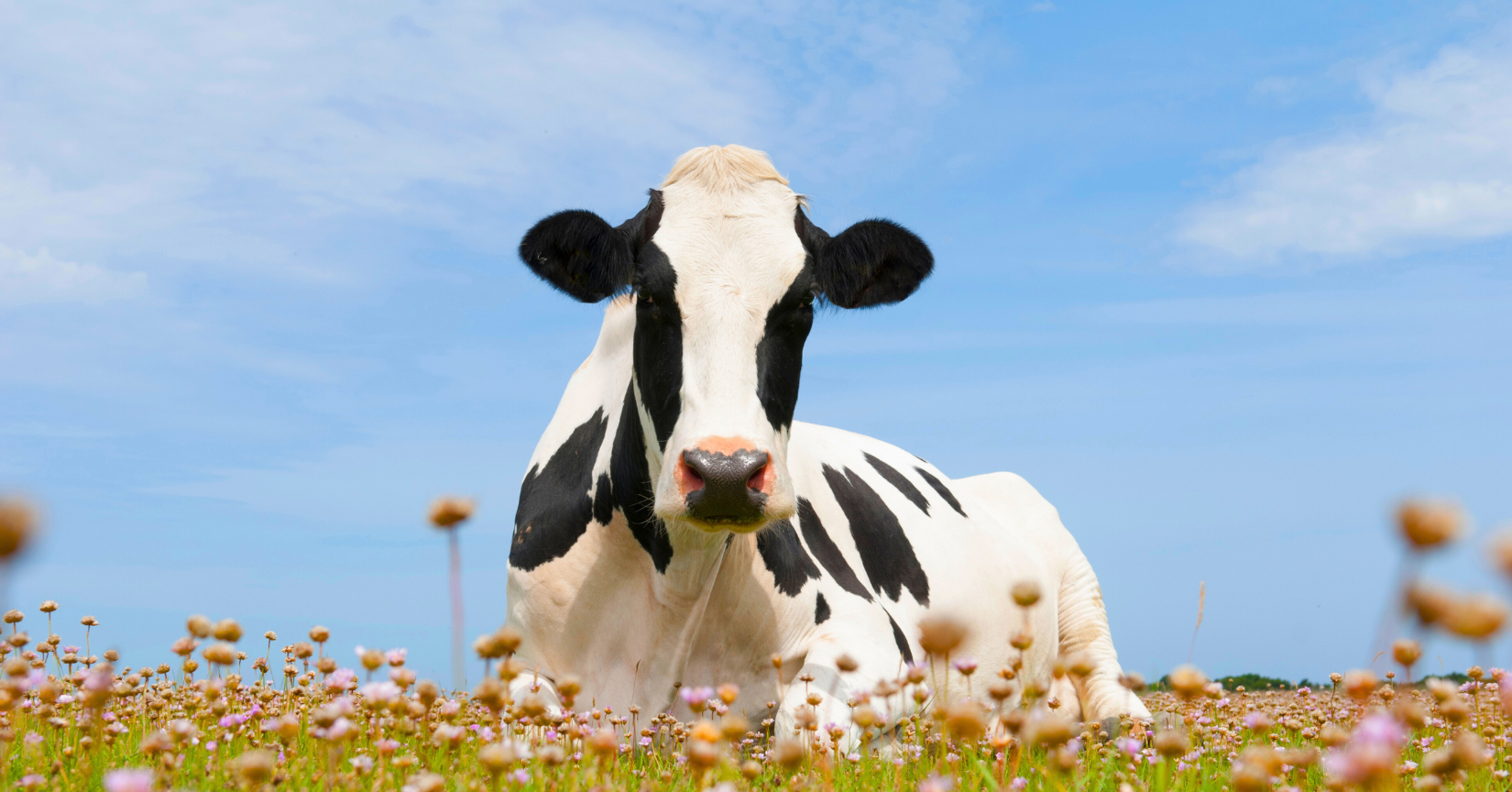
Cows* are one of the “most common and well-known farmed animals”, yet most of us know surprisingly little about these gentle, beautiful, complex beings.
Cows are “sweet”, “intelligent, highly social”, “playful”, “powerful but gentle” animals with “big dreamy eyes” and “complex personalities, emotions, and fascinating social behavior.”

These amazing beings share 80% of their genes with humans and are all individuals with unique personalities, who:
- live “rich emotional lives” and “complex social li[ves]” that require “substantial intellectual ability”.
Cows “are really just giant puppies” who “thrive in social environments where they can build relationships, play and exercise”. They have a “strong need for social interaction”, “form close relationships”, and “have best friends”, who they spend most of their time standing by, sharing food and coordinating activities with, and grooming. (Cows actually “form social ‘grooming partnerships’ similar to chimpanzees”!) They are also “very sensitive to how they are treated and will withdraw” from each other, and humans, “who have treated them unkindly.”
Cows provide each other with “emotional and social support” that improves their feelings of security and comfort, bolsters their resilience, reduces their stress, and increases their speed of learning! (Unsurprisingly, separation from one another results in significant stress and despair.)
Cows are “‘friendly and altruistic toward each other’”, often taking “actions that benefit the whole group and are helpful to others but of no immediate benefit to themselves.” And, they “work together as a group” – including when it comes to babysitting, a job they take turns with and allocate “democratically”!
Cows experience“‘emotional contagion’”, meaning they are “sensitive to and affected by one another’s emotional states”; show “support and concern” for each other; and “learn from” and are “influenced by one another”.
Cows form very strong mother-child bonds. Mothers and their calves “recognize each other”, “comfort each other”, and both “grieve” and “express extreme distress” when separated. (And, “[a]s with human babies, when allowed to stay with their mothers, calves tend to be more secure and socially adjusted.”)
- abide by “moral codes” (similar to those of humans)!
- show promise as (cuddly!) therapy animals for humans!
- recognize each other – and humans – by their faces, as well as “their posture and the way they move”!
This holds true even in still frames: when “‘let into a space with pictures, they immediately went to the pictures of cows they knew!’”.

- choose leaders based on their “intelligence, inquisitiveness, and confidence”, not their “dominance” or “strength”!
Cows’ chosen leaders are, actually, “the less dominant ones” and are typically “older”, “an indication of recognition of the value of experience”.
- love to learn, exhibiting “excitement and behaviors indicative of pleasure when they accomplish intellectually challenging tasks”!
- are super smart!
Cows are “naturally curious” and “clever”; “think critically and solve complex problems!”; enjoy “intellectual challenges” (as shown by their brains’ release of serotonin and their celebrations when they solve them); and have “excellent spatial memories!
- love to play, especially in the sunshine!
Cows “engage in all forms of play found in mammals”, including “social play with members of other species”! They are often observed to “gallop, buck, play-fight, frolic”, play chase and “chase after balls”, run, prance, jump, and play hide-and-seek!
- worry about the future!
- love to be petted and “enjoy a good rubdown”, just like dogs!
- are good swimmers!
- communicate verbally!
Cows “communicate with each other by making 333 unique sounds” and “can have regional accents” – “moo[-ing] in different ways depending on their location” and peer group!
- have better hearing than humans!
Cows “can hear lower and higher frequencies better than humans.” In fact, their sense of hearing ‘is very similar to dogs’, which is why loud noises can stress them”.
- have a “field of vision of almost 360 degrees”, which is about twice that of humans!
- can taste sweet, salty, bitter, and sour with their approximately 20,000 taste buds!
- can detect odors up to 6 miles away!
- are “considered a sacred symbol of life” and are “honored as sacred creatures in some parts of the world”!
* Cows are also “unique” in the English language because “English lacks a gender-neutral singular form”. As a result,“‘cow’ is used for both female individuals and all domestic bovines” (even though, technically, “a cow is a female [who] has given birth to at least one calf”; a “heifer” is a female who has yet to birth a calf; a “bull” is an “intact male”; and a “steer” is a “castrated male”).
Learn something interesting about cows? Spread the word! Share this page on Facebook or X.